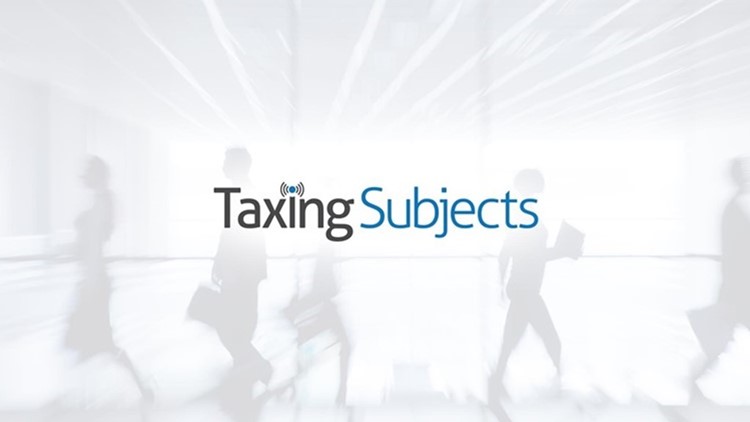by MEA Tax Advisors | Mar 17, 2021 | Tax Tips and News
It won’t be long before Americans start seeing the third round of Economic Impact Payments—also known as EIP3—showing up in their bank accounts and mailboxes.
The Internal Revenue Service is sending direct deposit payments first; some recipients could see their deposit by the weekend. No action is needed by most taxpayers, but they can use the Get My Payment tool on IRS.gov to check on the status of their EIP3.
How will the EIP3 rollout work?
- Most people will get $1,400 for themselves and $1,400 for each of their qualifying dependents claimed on their tax return.
- EIP3s are based on the taxpayer’s latest processed tax return from 2019 or 2020. This includes those who successfully registered online at IRS.gov, using the Non-Filers tool last year, or submitted a special simplified tax return to the IRS.
- If the IRS has received and processed a taxpayer’s 2020 return, that’s the one that will be used to calculate the Economic Impact Payment.
- The IRS will automatically send an EIP3 to people who did not file a return, but receive Social Security retirement, survivor or disability benefits (SSDI), Railroad Retirement benefits, Supplemental Security Income (SSI) or Veterans Affairs benefits.
- Payment levels have changed from previous EIPs. Payments will be reduced for those making $75,000 or more in Adjusted Gross Income ($150,000 for married filing jointly.) The phase-out ends at $80,000 for individuals and $160,000 for married filing jointly. People making more will be ineligible for EIP3.
What’s different in EIP3?
First, most people will see larger payments this time around. Most families will get $1,400 per person. This includes all dependents listed on their tax return—not just those under age 17 as in previous payments.
EIP3 includes dependents such as older relatives like college students, adults with disabilities, parents and grandparents.
The American Rescue Plan Act of 2021, the enabling legislation that makes all this possible, also seeks to keep the relief ball rolling with changes to important tax credits. These changes will be claimed on tax returns filed in 2022.
What else is in the American Rescue Plan Act of 2021?
Be sure to check out “The American Rescue Plan Includes Funding for Individual Payments, Changes to Tax Credits,” the Taxing Subjects blog that outlines changes to tax credits, like the child tax credit, the earned income tax credit, and the premium tax credit.
Sources: “IRS begins delivering third round of Economic Impact Payments to Americans,” IRS.gov; “More details about the third round of Economic Impact Payments,” IRS.gov
– Story provided by TaxingSubjects.com
by MEA Tax Advisors | Mar 17, 2021 | Tax Tips and News
Taxpayers, no matter their age, may be able to claim a deduction on their 2020 tax returns for contributions to their Individual Retirement Arrangement (IRA) if they make them by April 15.
Contributions to a traditional IRA are usually tax-deductible, and distributions are generally taxable. Taxpayers have from now to April 15, 2021, to make contributions that count for a 2020 tax return.
Taxpayers can file their return claiming a traditional IRA contribution before the contribution is actually made. The contribution must then be made by the April due date on the return.
While contributions to a Roth IRA are not tax-deductible, qualified distributions are tax-free. In addition, low- and moderate-income taxpayers making these contributions may also qualify for the Saver’s Credit.
Saving for the future
An IRA is designed to enable employees and the self-employed to save for retirement. Most taxpayers who work are eligible to start a traditional or Roth IRA or to add money to an existing account.
Generally, eligible taxpayers can contribute up to $6,000 to an IRA for 2020. If a taxpayer was age 50 or older at the end of 2020, they can contribute up to $7,000.
Restrictions on taxpayers age 70 1/2 or older to make contributions to their IRA were removed in 2020.
For 2020, if a taxpayer is covered by a workplace retirement plan, the deduction for contributions to a traditional IRA is reduced, depending on the taxpayer’s modified adjusted gross income.
The Internal Revenue Service further spells out the limitations on the deduction this way:
- Single or head-of-household filers with income of $65,000 or less can take a full deduction up to the amount of their contribution limit. For incomes more than $65,000 but less than $75,000, there is a partial deduction and if income is $75,000 or more there is no deduction.
- Filers that are married filing jointly or a qualifying widow(er) with $104,000 or less of income, a full deduction up to the amount of the contribution limit is permitted. Filers with more than $104,000 but less than $124,000 can claim a partial deduction and if their income is at least $124,000, no deduction is available.
- For joint filers, where the spouse making the IRA contribution is not covered by a workplace plan, but their spouse is covered, a full deduction is available if their modified AGI is $196,000 or less. There’s a partial deduction if their income is between $196,000 and $206,000 and no deduction if their income is $206,000 or more.
- Filers who are married filing separately and have an income of less than $10,000 can claim a partial deduction. If their income is at least $10,000, there is no deduction.
The IRS provides worksheets in the Form 1040 Instructions and in Publication 590-A, Contributions to Individual Retirement Arrangements. The deduction is claimed on Form 1040, Schedule 1.
Nondeductible contributions to a traditional IRA are reported on Form 8606, Nondeductible IRAs.
Claiming the Saver’s Credit
The Saver’s Credit is also known as the Retirement Savings Contribution Credit. It’s often available to IRA contributors with adjusted gross income that’s below certain levels.
Beginning in 2018, designated beneficiaries may be eligible for a credit for contributions to their Achieving a Better Life Experience (ABLE) account.
More information on ABLE account contributions is available in Publication 907, Tax Highlights for Persons with Disabilities. To claim the Saver’s Credit, use Form 8880, Credit for Qualified Retirement Savings Contributions. Form instructions have details on correctly figuring the credit.
Source:Tax Time Guide: Get credit for IRA contributions made by April 15 on 2020 tax returns
– Story provided by TaxingSubjects.com
by MEA Tax Advisors | Mar 13, 2021 | Tax Tips and News
President Biden signed into law the $1.9 trillion American Rescue Plan Act of 2021, which includes a number of tax-related provisions that lawmakers say will help struggling Americans weather the pandemic recession. As with any legislation that affects taxes, that means tax professionals need to know how it will affect their clients return preparation.
Here’s a short rundown of some of those changes.
How much are the new individual payments?
The upcoming third economic impact payment (EIP3) is an advance payment of a 2021 refundable tax credit, and it’s the most well-known component of the American Rescue Plan Act of 2021. Qualifying individuals, couples, and filers claiming dependents are expected to start receiving their payments soon:
- $1,400 for single filers with an adjusted gross income of up to $75,000
- $1,400 for heads of household with an adjusted gross income of up to $112,500
- $2,800 for married couples filing jointly with an adjusted gross income of up to $150,000
- $1,400 for each dependent, including college students and qualifying relatives who are claimed as dependents
And the credit completely zeroes out when AGI reaches the following amounts:
- $80,000 for single filers
- $120,000 for heads of household
- $160,000 for married couples filing jointly
Generally, taxpayers qualify for EIP3 if their AGI doesn’t zero out the credit and they have a valid Social Security Number. While nonresident aliens, dependents who can be claimed by another taxpayer for the 2021 calendar year, and estates and trusts will not qualify for EIP3, there are exceptions to the SSN requirement.
Married members of the Armed Forces who file jointly will receive the full $2,800 as long as one spouse has a valid Social Security Number and their AGI doesn’t start phasing out the credit. And an adoption taxpayer identification number is considered a valid identification number for qualifying dependents.
What are the tax year 2021 changes for the child tax credit?
For tax year 2021, the entire child tax credit will be refundable, and its amount will depend on the age of each qualifying child:
- Up to $3,600 for each qualifying child younger than 6
- Up to $3,000 for each qualifying child younger than 18
Previously, the child tax credit was worth up to $2,000 for qualifying children younger than 17 years, and only $1,400 of the credit was refundable.
What are the changes to the Earned Income Tax Credit?
For tax year 2021, it will be easier for more taxpayers to qualify for the earned income tax credit due to the following changes:
- The minimum age for most taxpayers to claim the credit is dropping to 19
- The minimum age for qualified former foster youths and qualified homeless youths to claim the credit is dropping to 18
- The minimum age for specified students to claim the credit is dropping to 24
- The percentage of the credit and phaseout for individuals without children is increasing to 15.3 percent
- Disqualified investment income is increasing to $10,000
- Separated spouses may qualify as an individual for purposes of the EIC if they no longer live with their spouse by the end of 2021 and have a written separation agreement or receive maintenance payments, or they are married and meet all of the following criteria:
- Does not file a joint return
- Resides with a qualifying child … for more than one-half of [tax year 2021]
- During the last 6 months of [tax year 2021], does not have the same principal place of abode as [their] spouse
- Taxpayers whose 2021 earned income is less than their 2019 earned income may instead use their 2019 information to determine the amount of the EIC
Remember, these changes only apply to tax year 2021.
What are the changes to the Premium Tax Credit?
For tax year 2020, taxpayers who received an advance payment of the premium tax credit will not have to repay any of the advance that exceeds the allowed amount when reconciling the credit on the tax return for that year.
For tax year 2021, taxpayers “who [have] received, or [have] been approved to receive, unemployment compensation for any week beginning during 2021” will be “treated as an applicable taxpayer” for the PTC.
For tax years 2021 and 2022, the premium tax credit will use the following income percentages table:
|
In the case of household income (expressed as a percent of poverty line) within the following income tier:
|
The initial premium percentage is—
|
The final premium percentage is—
|
|
Up to 150.0 percent
|
0.0
|
0.0
|
|
150.0 percent up to 200.0 percent
|
0.0
|
2.0
|
|
200.0 percent up to 250.0 percent
|
2.0
|
4.0
|
|
250.0 percent up to 300.0 percent
|
4.0
|
6.0
|
|
300.0 percent up to 400.0 percent
|
6.0
|
8.5
|
|
400.0 percent and higher
|
8.5
|
8.5
|
Note: If you already filed your taxes and reported your repayment of the Advance Premium Tax Credit (APTC), the current guidance is to wait—do not file an amended return until the IRS releases official guidance. Continue to check the News section of the IRS website for updates.
If you haven’t filed and meet the same criteria, software companies will be updating their programs once they receive guidance on the APTC from the IRS. It is advised that you should wait until software companies receive official guidance and make the necessary changes.
What are the changes to unemployment compensation?
For tax year 2020, federal income tax will be waived on unemployment compensation that doesn’t exceed $10,200 for individuals and married couples filing jointly whose adjusted gross income is less than $150,000. In the case of joint filers, the $10,200 limit applies per spouse.
For tax year 2021, unemployment benefits are extended until September 6, 2021, and starting March 31, 2021, weekly compensation will be increased by $300.
Note: If you already filed your taxes and reported unemployment benefits, the current guidance is to wait—do not file an amended return until the IRS releases official guidance. Continue to check the News section of the IRS website for updates.
If you haven’t filed and meet the same criteria, software companies are updating their programs now to include the new Unemployment Compensation Exclusion Worksheet. It is anticipated that most software companies will release updates for this new calculation during the week starting March 15.
Expect IRS guidance for provisions of the American Rescue Plan Act
The American Rescue Plan of 2021 is a sweeping recovery package that also affects the Paycheck Protection Program, paid sick and family leave, and a number of other business and individual tax credits. So, be on the lookout for Internal Revenue Service guidance for all of the legislation’s tax-related provisions in the coming weeks and months, including what’s outlined above.
Source: H.R. 1319; IRS Statement – American Rescue Plan Act of 2021
– Story provided by TaxingSubjects.com
by MEA Tax Advisors | Mar 12, 2021 | Tax Tips and News
The Internal Revenue Service yesterday released a COVID Tax Tip highlighting guidance for employers who deferred payment of their employee’s 2020 Social Security tax. Initially described by legislators as a “payroll tax holiday,” the agency reminds participating employers that they still have to pay deferred employee Social Security tax by the new deadlines.
The IRS explains that employers were provided payroll-related tax relief in two parts last year:
- The Coronavirus, Aid, Relief and Economic Security Act allowed employers to defer payment of the employer’s share of Social Security tax.
- IRS Notice 2020-65 allowed employers to defer withholding and payment of the employee’s Social Security taxes on certain wages paid in calendar year 2020.
Notice 2020-65 was issued by the IRS following an August 8, 2020 Presidential Memorandum that “[directed] the Secretary of the Treasury (Secretary) to use his authority pursuant to section 7508A of the Internal Revenue Code (Code) to defer the withholding, deposit, and payment of certain payroll tax obligations” (Notice 2020-65, 1).
IRS COVID Tax Tip 2021-32 addresses three important points from the notice: which employee wages qualified for deferral, when payments for deferred employee withholding are due, and how employers can pay the deferred withholding.
Which employee wages qualified for deferral under Notice 2020-65?
Employers were permitted to defer Social Security tax withholding for employees making less than $4,000 every two weeks. While private employers could voluntarily participate in the payroll tax holiday, the IRS notes in the tax tip that “it was mandatory for federal employees and military service members.”
When are payments for deferred employee withholding due?
Deferred employee withholding should be paid ratably from January 1, 2021 to December 31, 2021, though the IRS notes that, due to the holidays, December 31 payments will be considered timely as long as they’re made by January 3, 2022. Importantly, employers who miss repayment deadlines could face penalties and interest.
How do employers make deferral payments for 2020 employee withholding?
The IRS recommends the Electronic Federal Tax Payment System for making deferred employee Social Security tax payments. The system accepts credit cards, debit cards, money orders, and checks, but there is an important caveat: You have to make deferral payment separate from other payroll tax payments, since “IRS systems won’t recognize the payment if it is with other tax payments or sent as a deposit.”
That said, be on the lookout for the upcoming “deferral payment” option for EFTPS.
To make deferral payments, the IRS says “employers can visit EFTPS.gov, or call 800-555-4477 or 800-733-4829 for details.”
One final note: Business clients who elected to defer the employee Social Security withholding may want to remind affected employees that the previously deferred tax will come out of their pay in 2021, possibly resulting in lower-than-expected paychecks.
Sources: COVID Tax Tip 2021-32
– Story provided by TaxingSubjects.com
by MEA Tax Advisors | Mar 3, 2021 | Tax Tips and News
Congress bookended 2020 with two taxpayer relief packages aimed at mitigating the financial strain caused by the ongoing coronavirus pandemic. The Coronavirus Aid, Relief, and Economic Securities Act and Taxpayer Certainty and Disaster Tax Relief Act of 2020 include a number of provisions that either create or modify tax relief for individual taxpayers and businesses.
Now that we’re well into tax season, taxpayers are sorting out how to claim new tax credits, like the recovery rebate credit and the employee retention credit. Lucky for business owners who still have questions about the latter, the Internal Revenue Service this week published Notice 2021-20, Guidance on the Employee Retention Credit under Section 2301 of the Coronavirus Aid, Relief, and Economic Security Act, which also covers how receiving a PPP loan affects the credit.
What is the employee retention credit?
The employee retention credit was created by the CARES Act to provide business owners a tax incentive for keeping employees on the payroll during the COVID-19 pandemic.
“For 2020, the employee retention credit can be claimed by employers who paid qualified wages after March 12, 2020, and before January 1, 2021, and who experienced a full or partial suspension of their operations or a significant decline in gross receipts,” the IRS explains in the Notice 2021-20 announcement. “The credit is equal to 50 percent of qualified wages paid, including qualified health plan expenses, for up to $10,000 per employee in 2020. The maximum credit available for each employee is $5,000 in 2020.”
The Taxpayer Certainty and Disaster Tax Relief Act of 2020—included in the December Consolidated Appropriations Act—allows PPP recipients to claim the employee retention credit and extends the eligibility window to include “the first two calendar quarters in 2021.”
What’s in IRS Notice 2021-20?
The IRS says that Notice 2021-20 answers a number of frequently asked questions that are addressed in the notice, including:
- Who are eligible employers?
- What constitutes full or partial suspension of trade or business operations?
- What is a significant decline in gross receipts?
- How much is the maximum amount of an eligible employer’s employee retention credit?
- What are qualified wages?
- How does an eligible employer claim the employee retention credit?
- How does an eligible employer substantiate the claim for the credit?
While Answer 49 in Notice 2021-20 confirms that PPP loan recipients are generally able to claim the employee retention credit, it also points out that wages claimed for the purposes of the credit will not qualify for loan forgiveness.
“An employer that received a PPP loan may claim the employee retention credit for any qualified wages paid to employees if the employer is an eligible employer that meets the requirements for the credit,” the notice reads. “However, qualified wages for which the employer claims the employee retention credit are excluded from payroll costs paid during the covered period (payroll costs) that qualify for forgiveness.”
The IRS closes the release by noting that this guidance only applies to tax year 2020, and that additional guidance for early 2021 is forthcoming—directing readers to the “Coronavirus Tax Relief for Businesses and Tax-Exempt Entities” page on IRS.gov for more information about CARES Act provisions that affect businesses.
Sources: IR-2021-48; Notice 2021-20
– Story provided by TaxingSubjects.com





